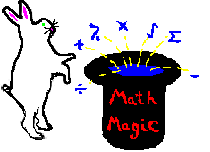

[ Home ] [ FOIL Method ] [ Double & Half Method ] [ Squaring Numbers ] [ Squaring Num End In 5 ] [ Squaring Num End In 6 ] [ Squaring Num End In 7 ] [ Squaring Num End In 8 ] [ Squaring Num End in 9 ] [ Squaring Nums 40-49 ] [ Squaring Nums 50-59 ] [ Squaring Nums 90-99 ] [ Difference of 2 Squares ] [ Mult Nums End in 5 ] [ Mult Nums One's Add 10 ] [ Mult Nums One's Add 5 ] [ Mult Nums Same Ten's Digits ] [ Mult Nums Tens Add 10 ] [ Mult Nums Less 100 ] [ Mult Nums More 100 ] [ Mult Nums More 100 Less 100 ] [ AB + BC ] [ AA + 2AA ] [ AA + 3AA ] [ AA + 7AA ] [ AA + 10AA ] [ Mult Nums Less 1000 ] [ Mult Nums More 1000 ] [ Add 2 Squares ] [ Product of 4 Nums ] [ Adding Consecutive Squares ] [ Squaring: 101a ] [ Adding Squares #2 ]
(*View/Download .pdf
file*)
Adding 2 Consecutive Square Numbers:
A. From algebra we know:
a2 + (a+1)2 = 2(a)(a+1) + 1
B. This
works for any consecutive squares. However if one of the squares is a
multiple of 5, the problem becomes very simple:
a2
+ (a+1)2 = 10
[(a)(a+1)] +
1
5
C. In
other words, the answer always ends in a 1. And you can divide one of the
numbers by 5 and multiply by the other to get the first part of the answer.
D.
Examples:
Ex [1] 352
+ 362 = _______
a. Write
down 1.
b. 35 ÷ 5 =
7. 7 x 36 = 252. Write 252.
c. The
answer is 2521.
Ex [2] 552
+ 542 = ________
a. Write
down 1.
b. 55 ÷ 5 =
11. 11 x 54 = 594. Write 594. See
Multiplying By 11.
c. The
answer is 5941.
Back to top

